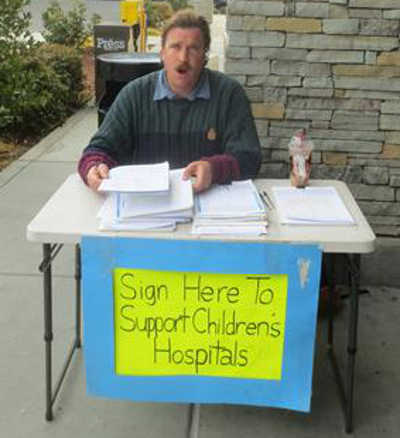- Nelson Strasser
- Posted On
Strasser: Justice, Lake County style
On March 14, Judge Richard Martin issued a writ to keep our senior mobile home rent control initiative off the ballot.
There was no question that our initiative was flawed. However, under California law, the judge has the power to repair, or order repaired, “non-material errors.”
The “guiding principal,” in this regard, according to case law, is that the intent of the lawmaker remains intact after the proposed changes are made.
Since, in this case, I proposed the law, I reiterated to the judge my intent: I wanted to protect seniors from rent increases that far exceeded cost of living increases.
I told Judge Martin that my intent had been made clear on the local public radio, public TV and in the press by way of letters to the editor. And, if he ordered the changes required to make the initiative “valid,” the intent of the initiative would remain intact.
In the end, the judge merely repeated the flaws in the initiative. But the real question before the court was not the flaws, which we had conceded, but whether the court would allow them to be repaired, as California Code allows.
Keep in mind that under our judicial system, courts are constrained by the doctrine of “stare decisis,” which means that the judge must follow the rulings of higher courts (except the Supreme Court, which can reverse itself). The judge did not cite case law on which he based his decision.
So, this meant that Judge Martin used his discretion to rule for the park owners, or allow the initiative to go to ballot, and let the people decide the matter. Judge Martin looked out at the audience of elderly in the courtroom, and, with the brevity of a signature, extinguished their hopes.
Let me be clear: I have no personal grudge against Judge Martin. Quite the opposite; I found him amiable and he gave me all the time I needed and plenty of latitude in making my case. But, in the end, as I said, he kicked us off the ballot.
And then I realized that the conclusion had been foregone. Judge Martin would never have made any other decision: He is a member of the power structure of Lake County, which consists of all white, all male, all conservative and relatively wealthy individuals. He was appointed by a Republican governor. These folks believe that old people in economic distress should have planned better.
However, there are many seniors in Lake County who have worked hard all of their lives, but never earned enough money to acquire significant savings. These seniors are not asking for frills; merely that their income does not shrink at the hands of predatory park owners.
There was a small victory, however. The owner of Sterling Shores Park, likely motivated by the possibility of rent control, sold to a nonprofit corporation, Caritas. Caritas’ philosophy is to never increase the rents more than the increase in the cost of living. So, at least there is safe harbor for the residents of that park.
Monday morning we begin to look into the appeals process. If that fails, we will begin again, this time wiser and more determined than ever. The Nobel Prize-winning author, Albert Camus, said, “In the midst of winter, I found there was, within me, an invincible summer.”
As for me personally, on Friday afternoon, I invited myself to a “pity party” and downed a few shots of tequila. Saturday, I kayaked on the lake, and Sunday I hiked in Boggs Forest.
And then, it hit me: It did hurt to lose this round, and I felt like I let my fellow seniors down, and a whole lot of effort went to naught, but, I had a great experience.
I got to know the joy of immersing myself in a campaign, of reading until I began to fall asleep, of falling asleep thinking of the campaign and waking up thinking about the campaign, of exploring legal issues of statute and case law, and of championing a cause that was larger than myself.
Lastly, to the bad actors who have sought to enrich themselves on the backs of the elderly poor, I have this to say: I am coming to get you! (Within the context of the law, of course.)
Nelson Strasser lives in Lakeport, Calif.








